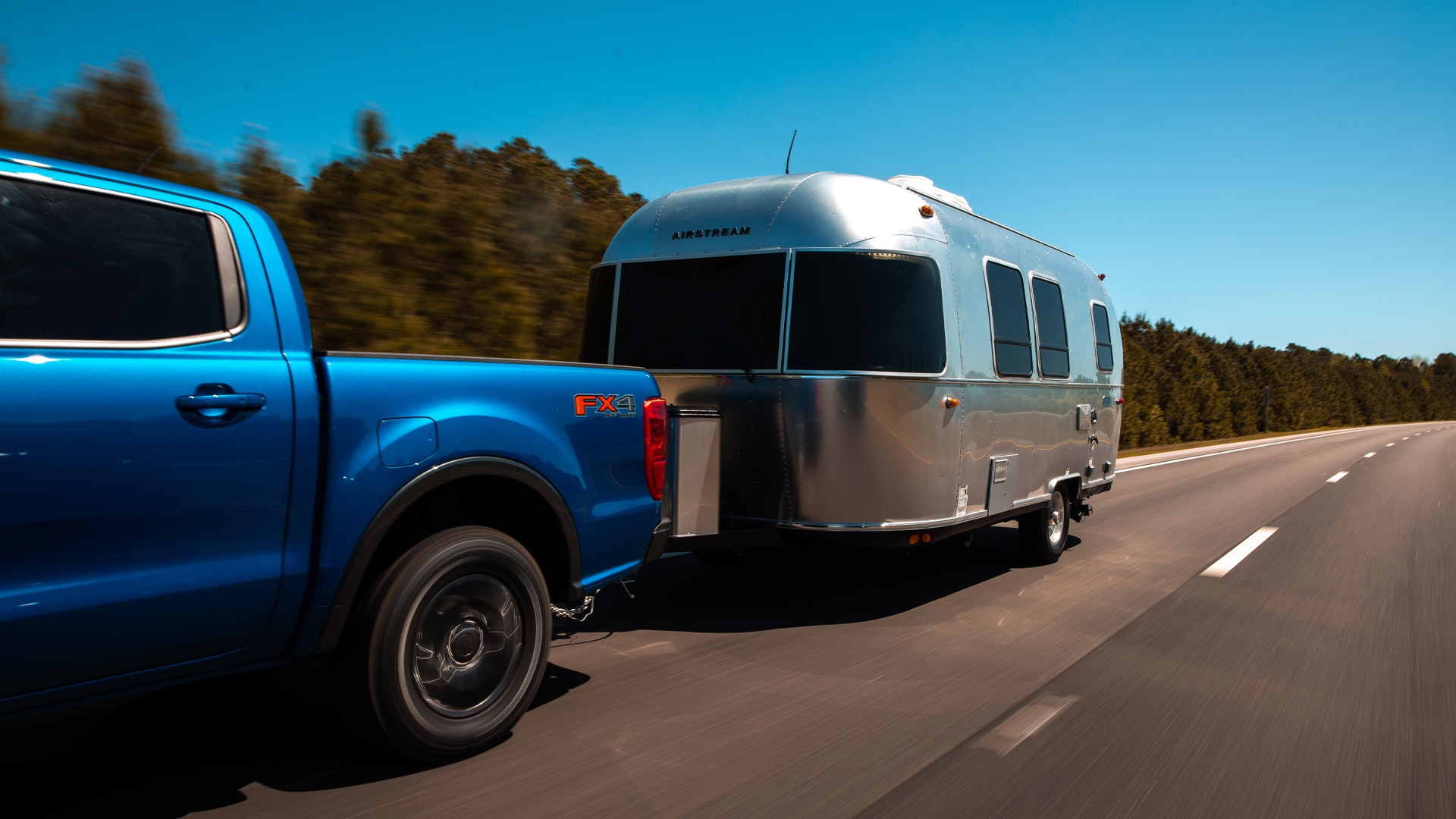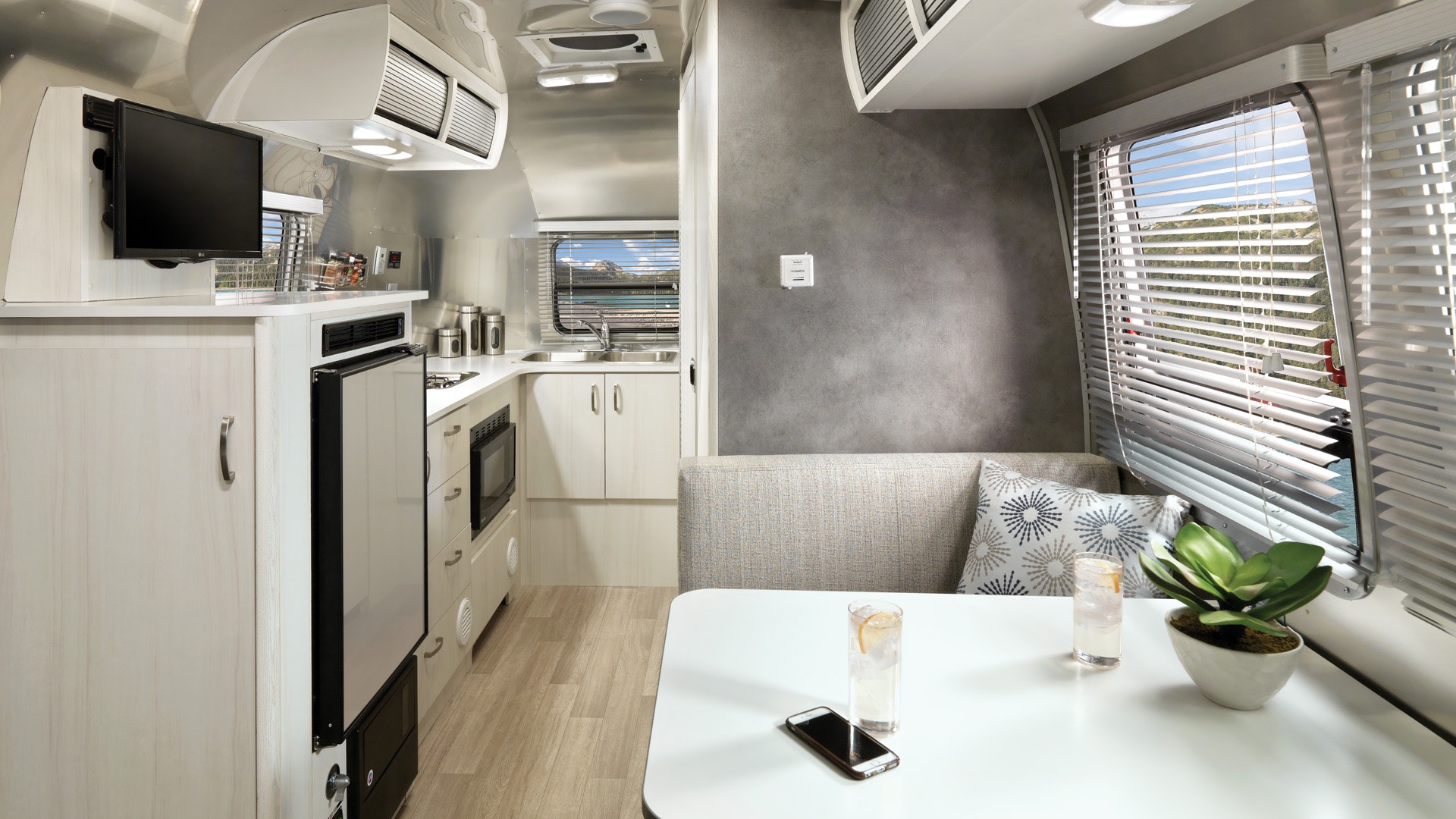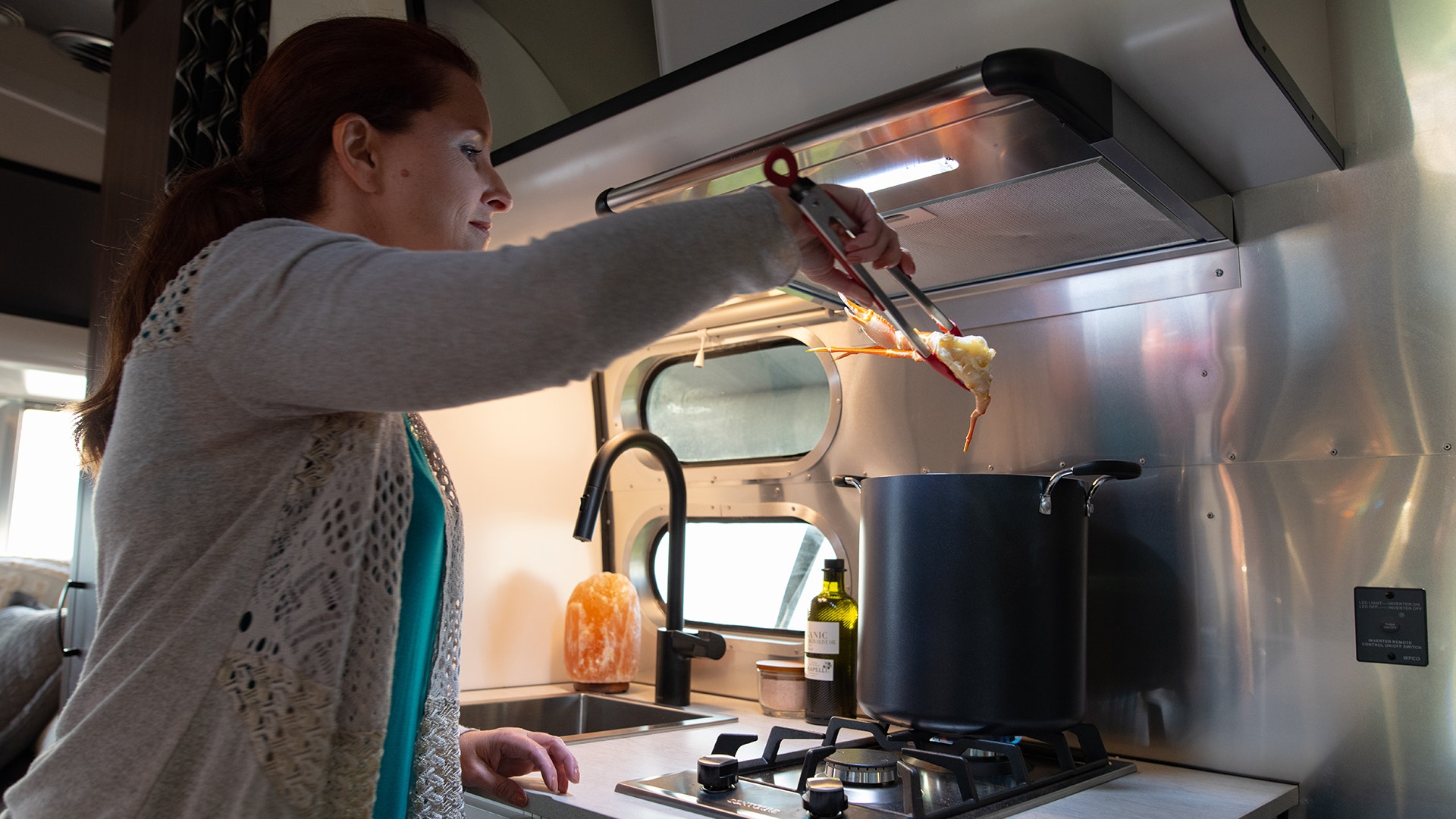Airstream, the much-revered aluminum travel trailer company, has launched two 2020 models that hark back to a time in the company’s history when “RVing” was more camping than glamping. The single-axle 2020 Airstream Bambi and Caravel models are lightweight, easy to tow, and relatively inexpensive compared to the company’s larger trailers.
If you guessed that Airstream positions the Bambi and Caravel as entry-level towable RVs aimed at attracting new buyers, you’re on the money. The two new trailers are not the least expensive Airstream models, however. The least expensive Airstream trailers are the Basecamp, starting at $37,400, and the Nest by Airstream, which starts at $45,900.
Here’s where company heritage plays a part. The Bambi, base price $48,900, and Caravel, $60,900 to start, are the smallest traditional-looking Airstream trailers. Unless you see a name badge, you won’t know for sure who makes the Nest or Basecamp, but there’s no mistaking the Bambi and Caravel as anything but Airstreams.
Another significant difference between the Airstream travel trailer pairs is sleeping capacity. The Nest by Airstream and Basecamp sleep two people max, but the Bambi and Caravel each sleep four, even in their smallest, 16-foot versions. The Bambi and Caravel are both available in four sizes, from 16 to 22 feet.
2020 Airstream Bambi
The smallest Airstream trailers have been nicknamed “Bambis” since the early 1960s, but the 2020 model is the first to use the name. The idea behind the name was to portray a vehicle that was light, nimble, sturdy, and reliable.
The 2020 Bambi travel trailers may be entry-level models, but they don’t lack conveniences or structural strength. Taking advantage of every square inch, the Bambi floor plans all have defined sleeping space for two, a convertible dinette that sleeps two more, an equipped kitchen, and a bathroom.
The Bambi’s standard features and options list are extensive, but all sizes have stainless steel kitchen appliances, JVC stereo with Bluetooth, rolltop lockers, air conditioning and heating, solar prewiring, and retractable awnings. More information about the Bambi’s features can be found on the Airstream site.
2020 Airstream Caravel
Airstream did have an earlier model called the Caravel. The 1956 Caravel Travel Trailer was named after light sailing vessels common in Europe in the fifteenth through seventeenth centuries.
The 2020 Caravel is a step up in luxury from the Bambi, with residential fixtures including Moen faucets, Baraldi vents, and cast-iron gas stove burners. The Caravel comes with black fixtures and accents, side and window awnings, ultra-leather seating, AC and heating, panoramic windows front and rear, and amazing storage capacity. Again, for information on more Caravel features, see the Airstream site.






















